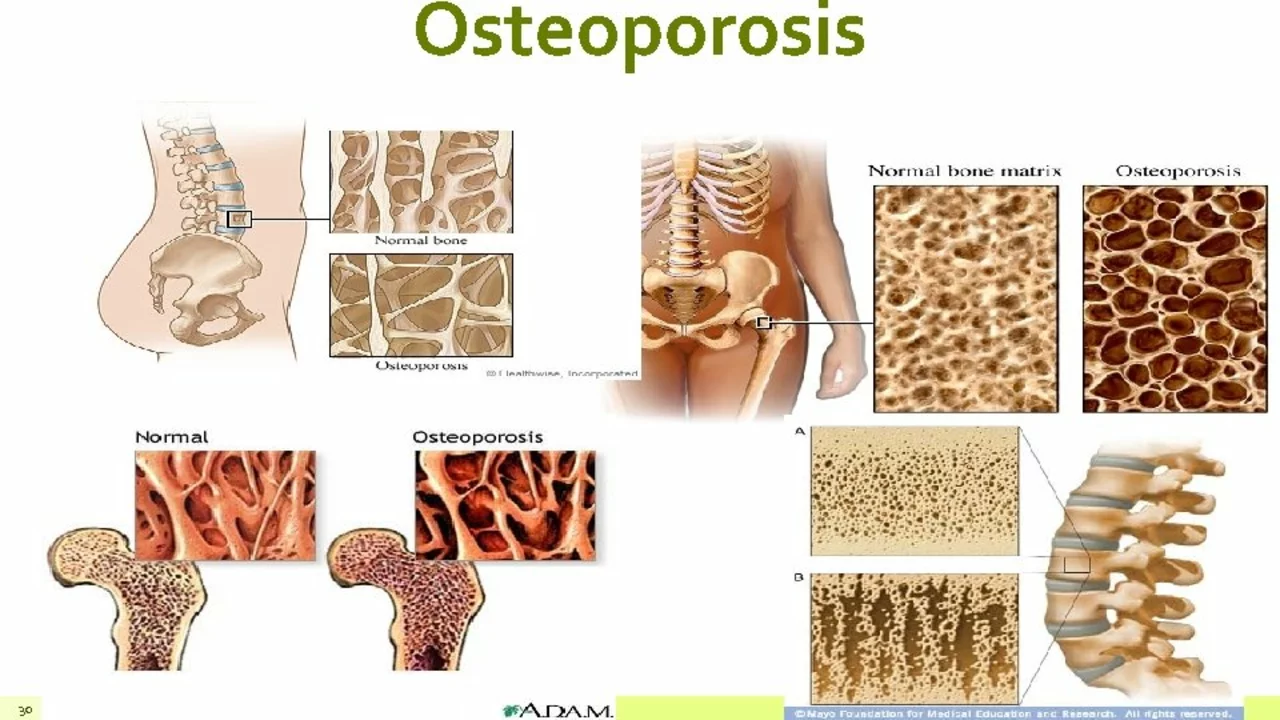Osteoporosis: What You Need to Know Right Now
Ever wonder why some people break a bone easily? That’s often because of osteoporosis – a condition where bones become thin and fragile. It doesn’t have to be scary if you know the signs and how to act early.
How Osteoporosis Develops
The body constantly rebuilds bone tissue. When the breakdown rate beats the building rate, density drops. Age, low calcium, vitamin D shortage, and a sedentary lifestyle are the usual suspects. Women hit their peak risk after menopause because estrogen drops, but men aren’t safe either – they can develop it in later years.
Symptoms can be sneaky. Most people feel fine until a small fall causes a fracture, often in the wrist, hip, or spine. Back pain that won’t go away may hint at a collapsed vertebra. If you notice a sudden loss of height or a curved posture, it’s time to check your bones.
Practical Steps to Protect Your Bones
Eat bone‑friendly foods. Aim for dairy, leafy greens, almonds, and fortified cereals that pack calcium. Pair them with vitamin D sources – sunlight, oily fish, or supplements – so your body can actually use the calcium.
Move your body. Weight‑bearing exercises like walking, jogging, or dancing send a signal to bone cells to strengthen themselves. Add resistance training two times a week; even simple squats with a water bottle work.
Avoid bone‑weakening habits. Smoking and heavy drinking speed up bone loss. Cutting back on caffeine and soda also helps because they can leach calcium out of your system.
Get screened. A simple DEXA scan measures bone density. If you’re over 50, or younger with risk factors, ask your doctor for a test. Early results let you start treatment before a fracture occurs.
Medication options. Doctors may prescribe bisphosphonates, hormone therapy, or newer drugs that build bone. These work best when combined with lifestyle changes, not as a stand‑alone fix.
Finally, keep a fall‑proof home. Remove loose rugs, install grab bars in the bathroom, and use non‑slip mats. Small tweaks can prevent a tumble that would otherwise lead to a serious break.Osteoporosis isn’t a one‑time problem; it’s a lifelong habit of caring for your skeleton. By eating right, staying active, avoiding harmful habits, and getting regular check‑ups, you give your bones the best chance to stay strong. Start today – your future self will thank you.

Living with Osteoporosis: Tips for Maintaining a Healthy Lifestyle
Living with osteoporosis can be challenging but incorporating a few lifestyle changes can make a big difference. Regular weight-bearing and resistance exercises can help increase bone density. A diet rich in calcium and vitamin D is key, as well as limiting alcohol and quitting smoking. Regular check-ups with your doctor are also vital to monitor the condition. Ultimately, it's about being proactive and making health-conscious decisions.